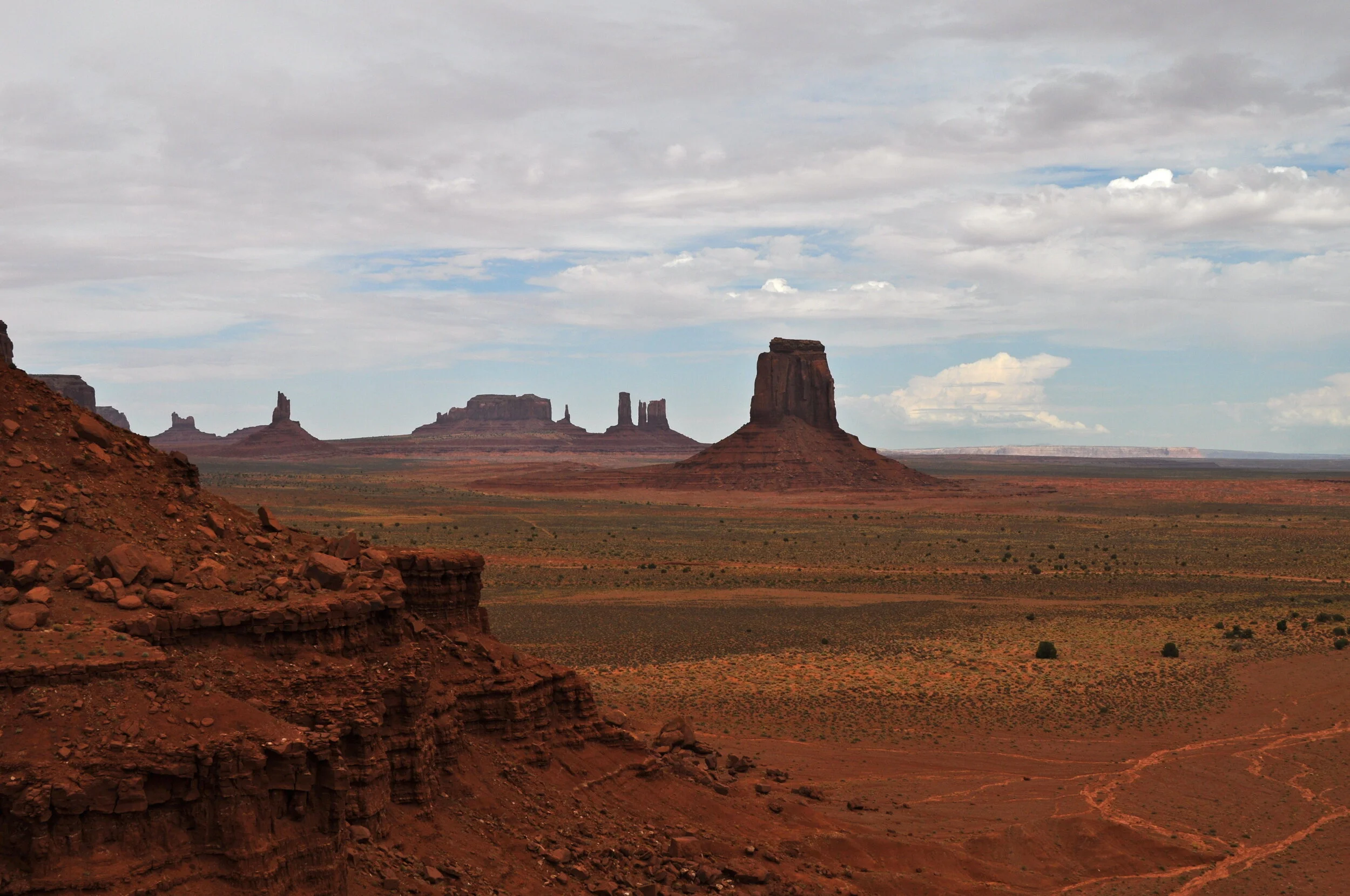Water running over the land can wash some of it away.
This makes grooves and gullies in the land.
Wind blowing over land can blow soil away.
Plants and trees can help stop that.
Wind can wear away rocks into shapes.
The sea can do that too.
Erosion is the gradual wearing away of soil and rock by water or wind, or a combination of the two.
Soil erosion is the wearing away of the topsoil. Topsoil is the top layer of soil. It contains the most organic, nutrient-rich materials and is the layer needed crops.
Erosion by water can happen when there is too much rain and there is a flood. The flood waters wash away the soil. Winds also blow the soil away. This is erosion too.
Erosion also happens when too many trees are cut down. This is called deforestation. The tree roots were holding the soil together. When the trees are gone, the topsoil is made vulnerable to winds and water which blow and wash the unprotected soil away.
Farmers make sure they protect against erosion by using good farming practices. Farmers protect farmland from the wind by planting windbreaks around their land. They move herds of sheep and cattle around so that grasses will have time to grow back and help keep the soil safe from erosion.
There are several types of soil erosion
Sheet and rill erosion
Sheet and rill erosion occurs on sloping land with little plant ground cover. When it rains, water runs down the hill and without plants to hold the soil in place, the flowing water washes the soil away.
Sheet erosion is when the water removes even layers of soil.
Rill erosion is when the water makes channels up to 30 cm deep.
An example of rill erosion is shallow channels made by water as it runs downhill. ©Getty
Gully erosion
This occurs over time when water makes a deep channel that washes away soil when it rains. Each time it rains, the channels get deeper as more soil is removed. The soil can wash away into creeks and streams and block the water flow and discolour the water, or damage roads. The loss of topsoil reduces the amount of area available for farming.
A combination of sheet and gully erosion. Sheet erosion has removed even layers of part of the slope and has carved a deeper gully on the right. ©Getty
Mass movement is when the erosion is helped by gravity, including landslides and avalanches. Mass movement not only removes a great deal of earth and rocks, it can destroy houses, roads and farmland.
A landslide in Norway. Image©Dreamstime
Soil erosion by wind
Erosion occurs when the wind lifts and removes topsoil. In dry or drought-affected areas in particular, soil that is not kept in place by plants is easily removed by the wind.
A dust storm on drought-affected farmland ©Getty
Where crops have been grown repeatedly without giving the land a rest, the soil becomes less bound together and easily breaks down and is blown away.
Where animals have grazed too much or have trampled the earth hard, the plants are no longer holding the soil together and it can be removed by the wind. The wind carries the soil away and dumps it elsewhere, which can clog rivers and streams, other farmland and roads. It can cause dust storms.
Wind and water erosion is not confined to farmlands. It occurs wherever there are regular winds blowing strongly.
Kata Tjuta, in the ‘red centre’ of Australia were formed by wind over centuries. ©Getty Images
Along coastlines where waves pound and the wind blows strongly the erosion is obvious.
Sea stack formations along the coast where the wind has gradually cut them away from the mainland. These are in Victoria, Australia. Image©Getty
Conserving the soil: How can soil erosion be controlled?
Farming methods used should be suited to the conditions. Crops need to be rotated around fields so that the soil is less disturbed by constant ploughing.
Stubble left in the fields, particularly canola stubble, helps prevent wind erosion and are useful as grazing land.
Plants help hold the soil together so that the wind and water don’t erode the land. ©Getty
The numbers of stock on the land should be enough so they do not over-graze the land, but are spread evenly over the whole area.
Where there is bare land suffering water runoff, plants such as grasses can be planted to hold the soil and keep it from being washed away.
To stop erosion, people plant trees to hold the soil together.
Grasses , shrubs and trees planted alongside waterways will stop water from eroding the banks.
It’s a good idea to get information from more than one source!
Read more about erosion:
https://www.ducksters.com/science/earth_science/erosion.php
https://www.konnecthq.com/erosion/
Read other kidcyber pages about erosion:
Watch a video about water erosion:
https://www.youtube.com/watch?v=qqsTS67BKmA








